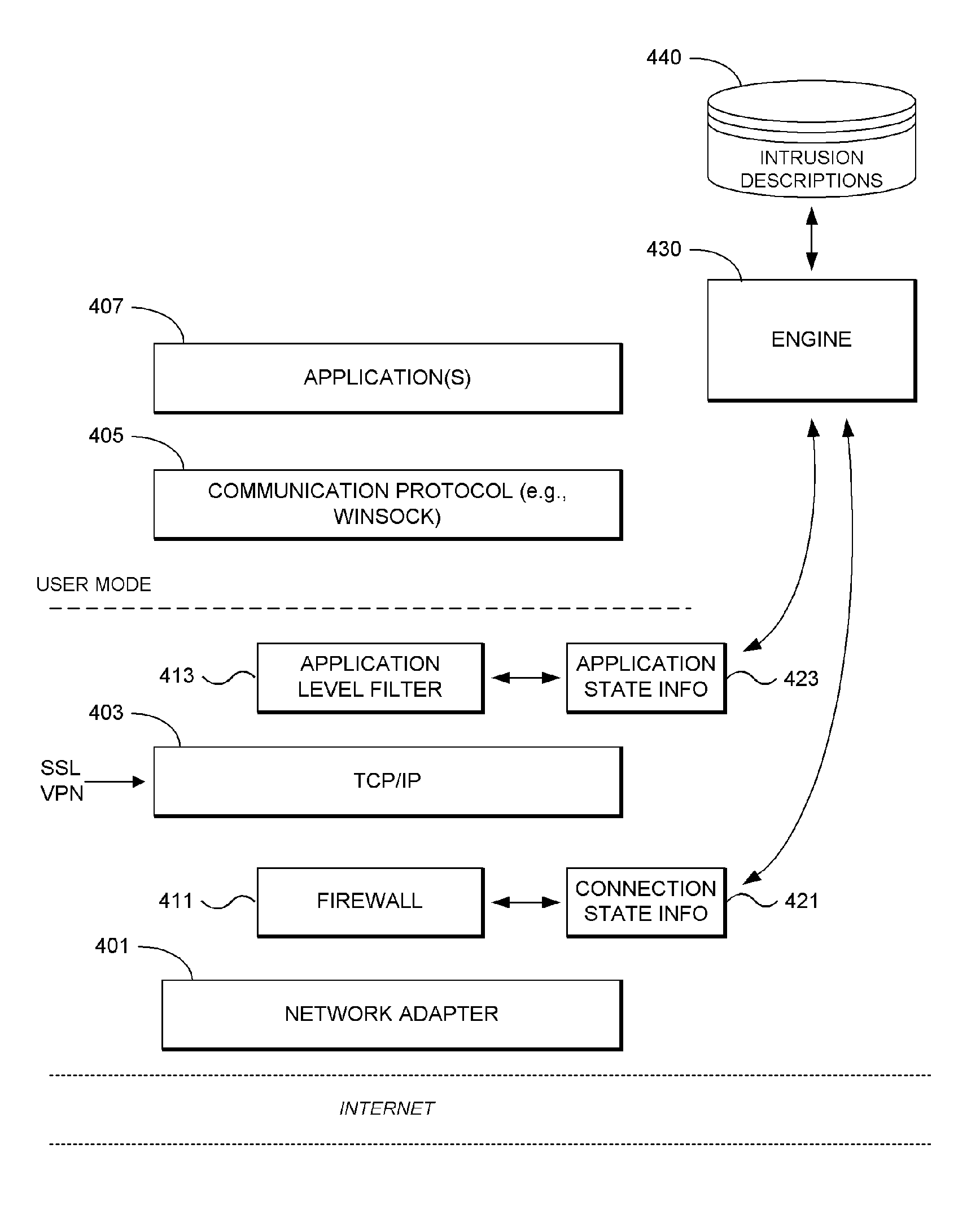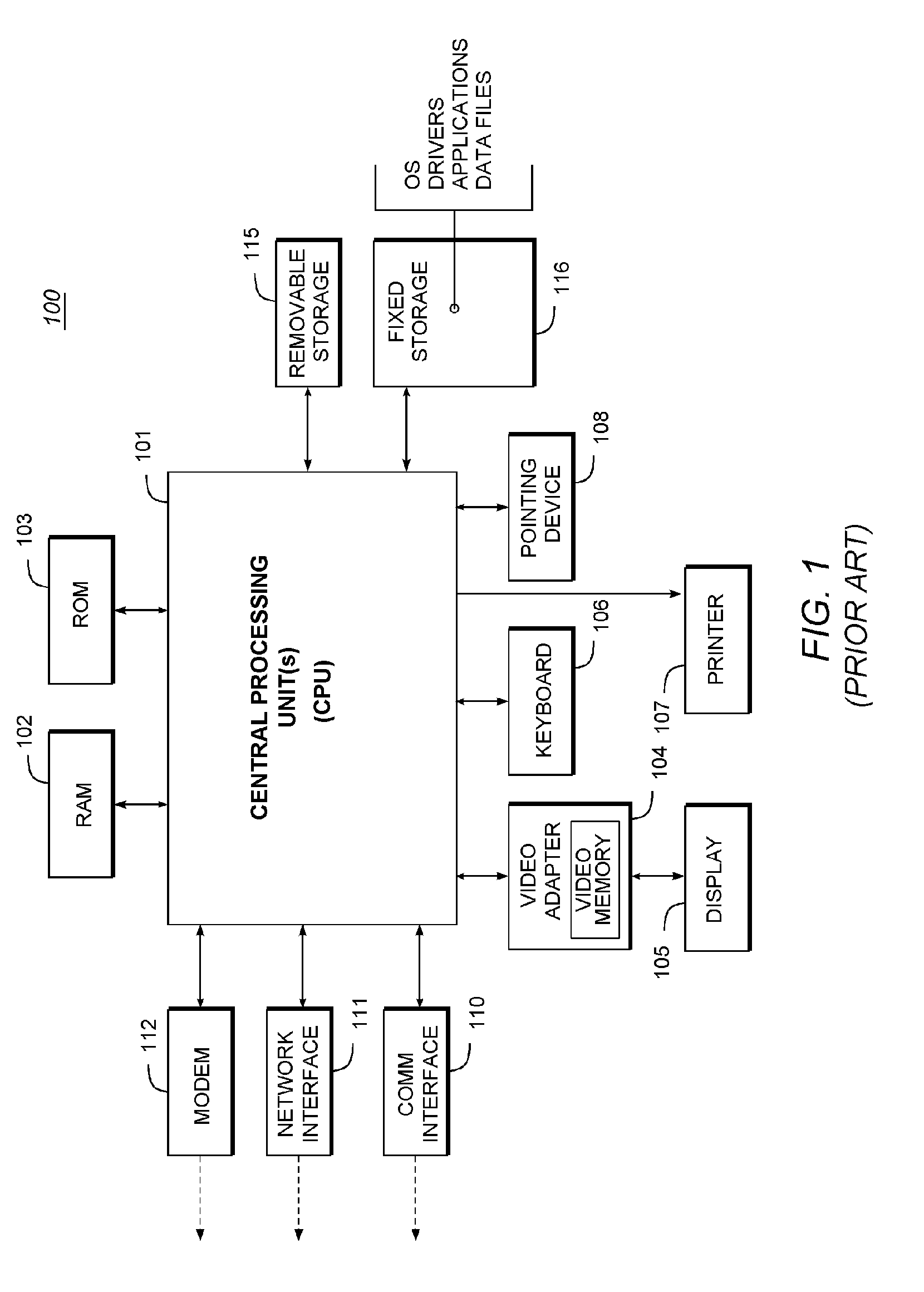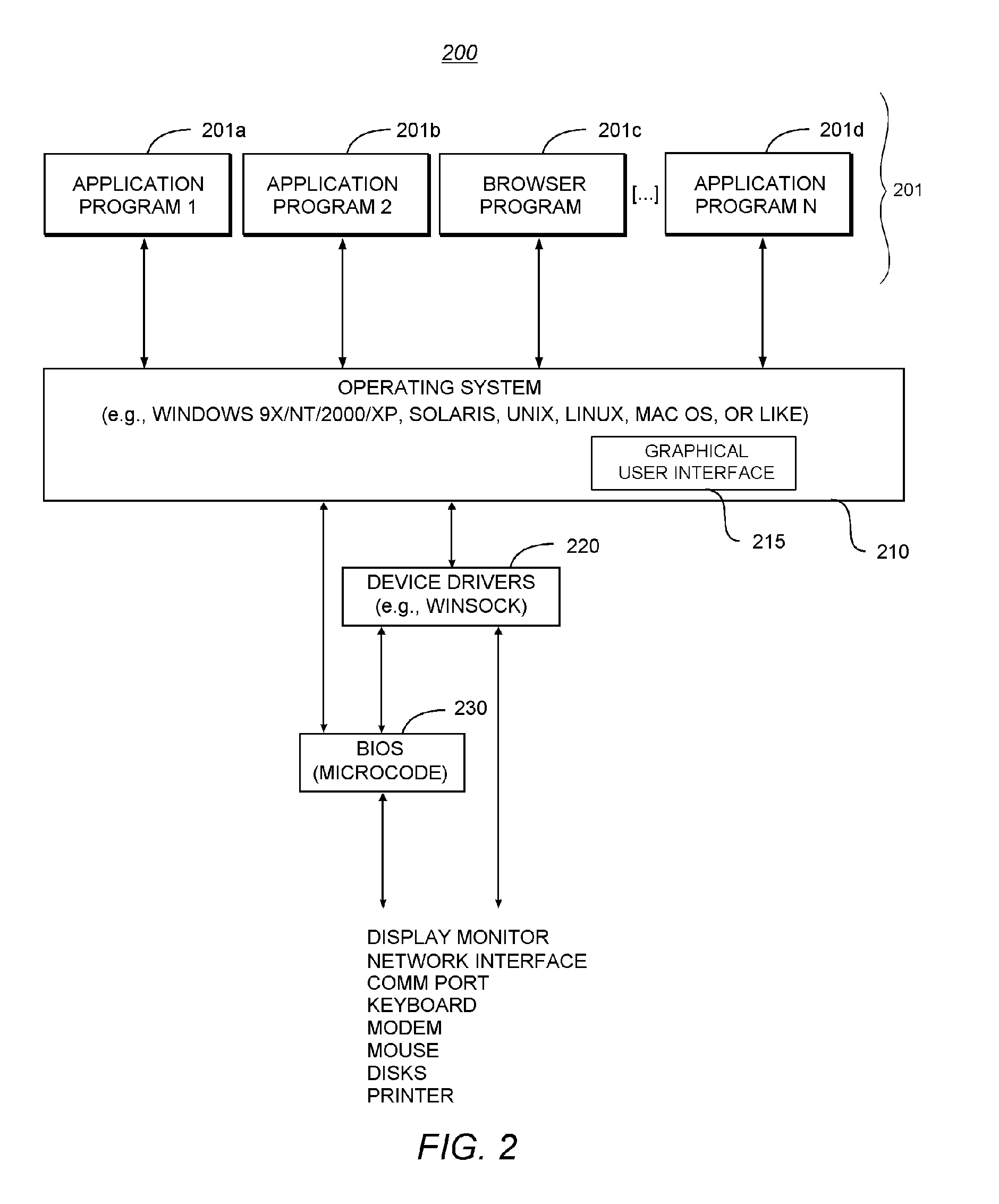System and methodology for intrusion detection and prevention
a technology of intrusion detection and prevention, applied in the field of computer security, can solve the problems of stealing proprietary data and programs, affecting the protection of computer systems, and being susceptible to attack or exploitation by hackers and other malicious users, and perpetrators (hackers) capable of damaging local computer systems,
- Summary
- Abstract
- Description
- Claims
- Application Information
AI Technical Summary
Benefits of technology
Problems solved by technology
Method used
Image
Examples
Embodiment Construction
[0031]Glossary
[0032]The following definitions are offered for purposes of illustration, not limitation, in order to assist with understanding the discussion that follows.
[0033]End point security: End point security is a way of managing and enforcing security on each computer instead of relying upon a remote firewall or a remote gateway to provide security for the local machine or environment. End point security involves a security agent that resides locally on each machine. This agent monitors and controls the interaction of the local machine with other machines and devices that are connected on a LAN or a larger wide area network (WAN), such as the Internet, in order to provide security to the machine.
[0034]Firewall: A firewall is a set of related programs, typically located at a network gateway server, that protects the resources of a private network from other networks by controlling access into and out of the private network. (The term also implies the security policy that is us...
PUM
 Login to View More
Login to View More Abstract
Description
Claims
Application Information
 Login to View More
Login to View More - R&D
- Intellectual Property
- Life Sciences
- Materials
- Tech Scout
- Unparalleled Data Quality
- Higher Quality Content
- 60% Fewer Hallucinations
Browse by: Latest US Patents, China's latest patents, Technical Efficacy Thesaurus, Application Domain, Technology Topic, Popular Technical Reports.
© 2025 PatSnap. All rights reserved.Legal|Privacy policy|Modern Slavery Act Transparency Statement|Sitemap|About US| Contact US: help@patsnap.com



